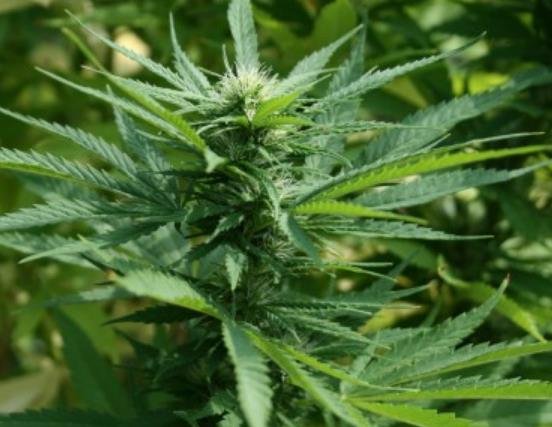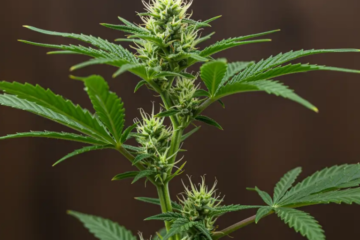Marijuana might not be the performance booster once feared by college sports officials—but it is turning heads for another reason. A recent presentation delivered by Jacksonville State University grad student Aquriya Muller claims that cannabis could help student athletes manage pain more effectively.
And the timing? Spot on. The National Collegiate Athletic Association (NCAA) has already moved to remove marijuana from its list of banned substances. With opioid concerns on the rise, could cannabis quietly be making its way into the mainstream of college sports medicine?
Cannabis and College Sports: Not the Taboo It Once Was
The NCAA’s decision to drop cannabis from its list of banned substances in 2023 raised more than a few eyebrows.
It didn’t happen overnight. For years, cannabis sat on the list right next to anabolic steroids and stimulants—banned outright. But unlike traditional performance enhancers, marijuana doesn’t make you faster, stronger, or sharper on the field.
So, why was it there in the first place?
The answer likely has more to do with cultural stigma than scientific fact. But with growing pressure from athletes and medical professionals, the NCAA changed course. It now treats marijuana use more like alcohol: something that may be discouraged but not automatically punished.
This change paved the way for new conversations about its potential benefits.

Evidence Emerging for Pain, Sleep, and Recovery
Muller’s research review wasn’t built on guesswork. She sorted through nearly a hundred academic articles, eventually narrowing it down to four that met specific inclusion criteria for evaluating marijuana’s use among student athletes.
The findings? Hard to ignore.
One athlete—a Division I basketball player—reported using cannabis to ease muscle spasms, manage chronic pain, and get better sleep. That’s not some minor benefit for a college athlete with back-to-back games and relentless travel.
The paper also highlighted these potential benefits:
-
Improved oxygenation in muscle tissues
-
Reduced muscle spasms post-game or after intense training
-
Anti-inflammatory effects that aid recovery
-
Better sleep and reduced stiffness in cases like fibromyalgia
For many trainers and team doctors, these are exactly the kinds of outcomes they chase with other meds.
One Student’s Project, But a Broader Shift in Thinking
Let’s be clear: this isn’t some massive federal study. Muller is a master’s student—not a tenured professor or NIH researcher. But that’s exactly what makes this notable.
This kind of presentation wouldn’t have been taken seriously ten years ago. Now, it’s being discussed at academic conferences.
Her review calls on athletic departments and healthcare teams to rethink their approach. It doesn’t demand that everyone switches to marijuana overnight—but it asks them to keep an open mind.
Especially since the alternatives—namely opioids—come with serious baggage.
What the Science Says (and What It Doesn’t)
Muller’s presentation referenced benefits tied to marijuana’s known anti-inflammatory properties. While this isn’t entirely new, it’s being applied to a group often left out of cannabis research: student athletes.
To put things into context, here’s a quick look at marijuana’s commonly studied therapeutic effects:
| Use Case | Evidence Strength | Commonly Reported Effects |
|---|---|---|
| Chronic pain | Moderate-High | Relief, relaxation, reduced opioid use |
| Sleep improvement | Moderate | Easier falling asleep, deeper rest |
| Inflammation reduction | Moderate | Less swelling, improved recovery |
| Muscle spasm relief | Low-Moderate | Reduced cramping, less stiffness |
Most studies stop short of saying cannabis is a cure-all. But for athletes dealing with nagging injuries or sleep issues, even moderate benefits can make a big difference.
The NCAA’s Future With Marijuana: Still Unclear
The NCAA hasn’t exactly rolled out a red carpet for cannabis. Sure, it’s off the banned list—but that doesn’t mean it’s widely accepted on campuses.
Policies still vary between universities. Some colleges continue to treat marijuana use as a violation of team conduct. Others defer to state laws. And of course, cannabis remains illegal at the federal level, making funding a bit of a tightrope act for publicly funded institutions.
That said, the tone is shifting. A substance once seen as purely recreational—or worse—is now part of serious medical discussions.
One paragraph. One sentence.
A few years from now, it might not be surprising to see university trainers discussing CBD ointments or THC microdosing routines just like they talk about protein shakes and foam rollers.
But for now, we’re still in the early stages.



